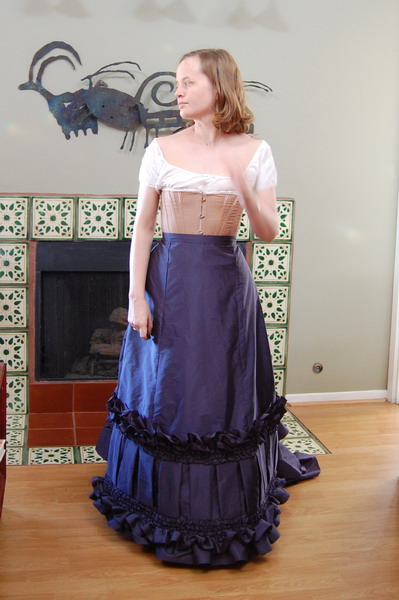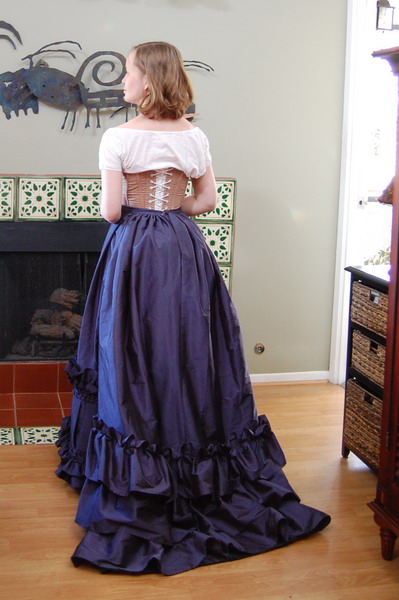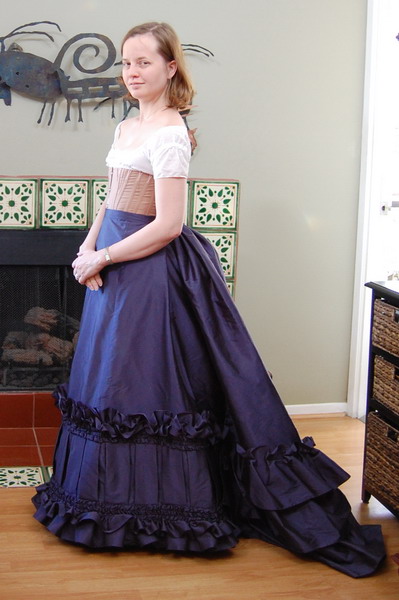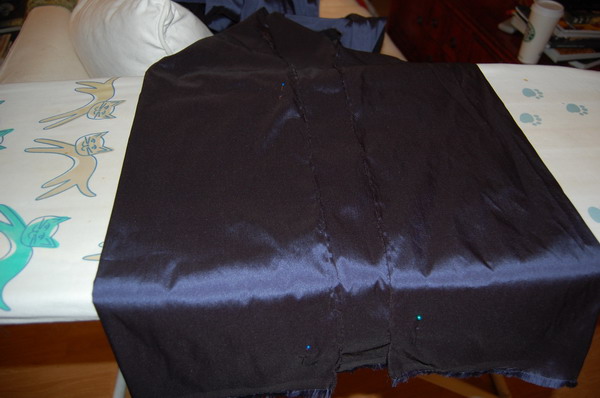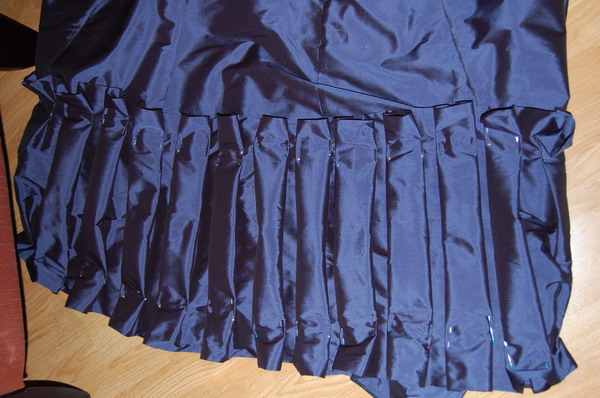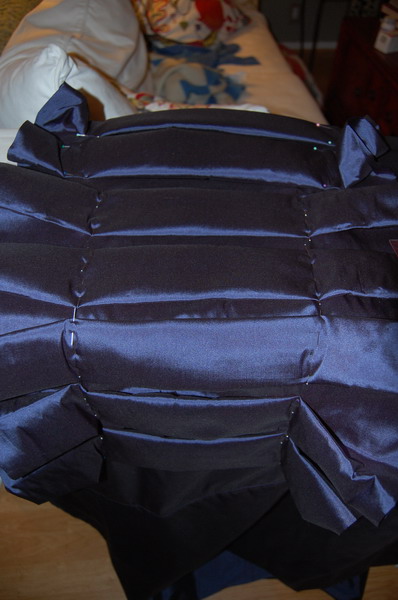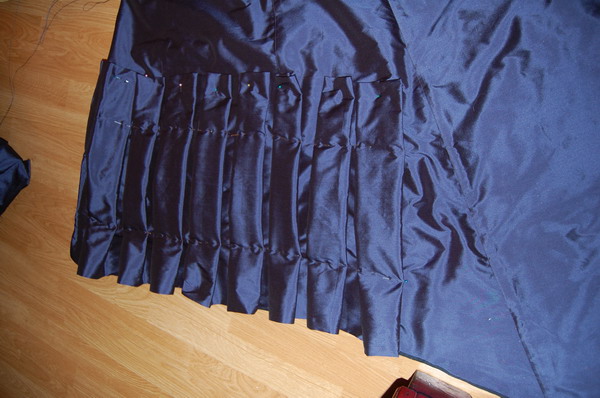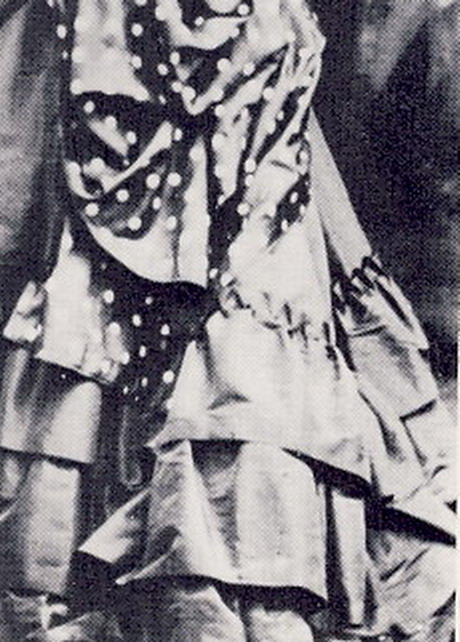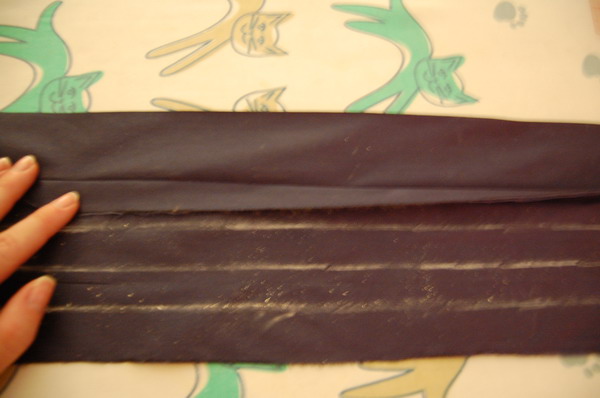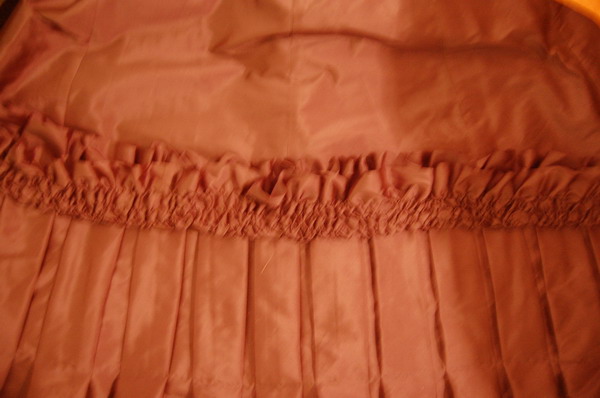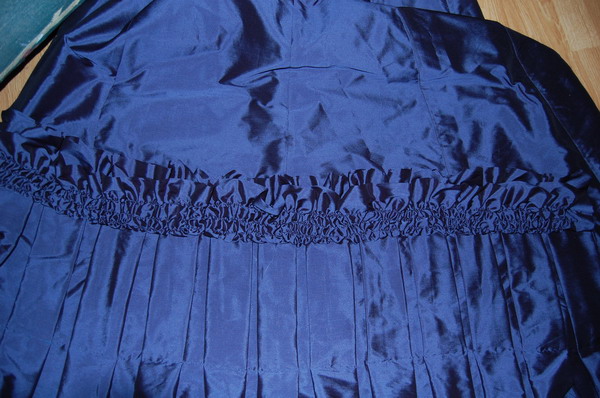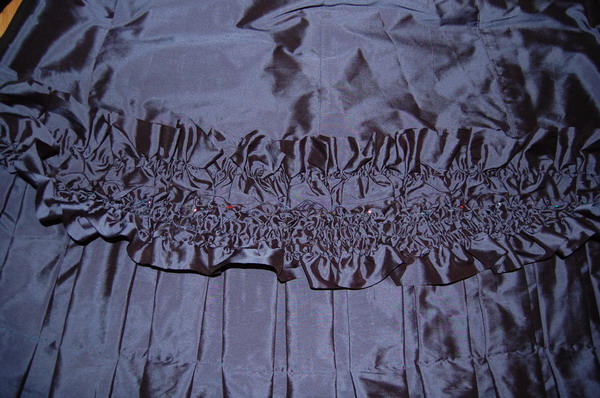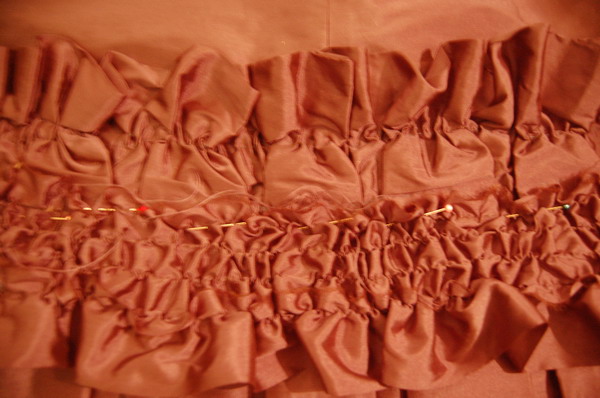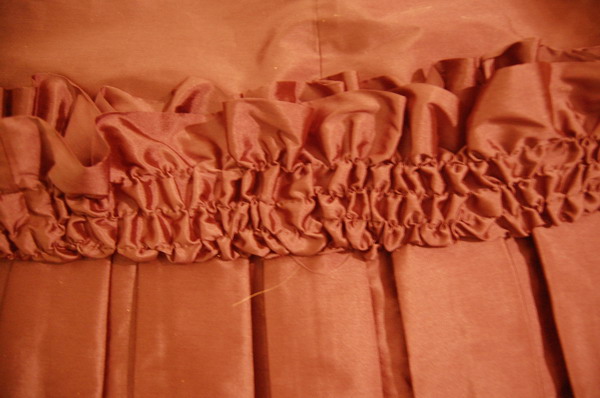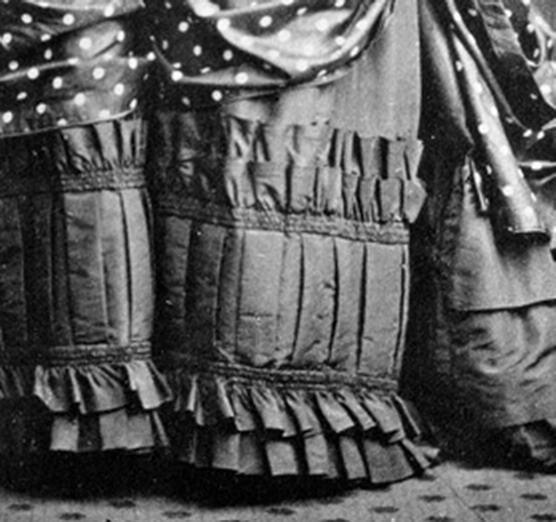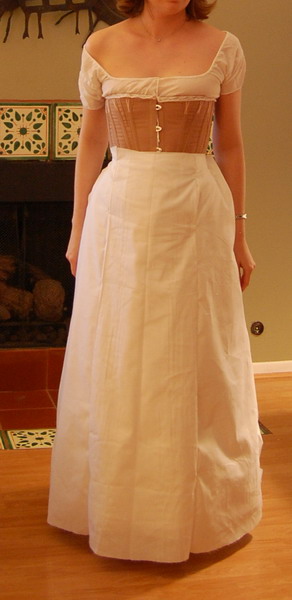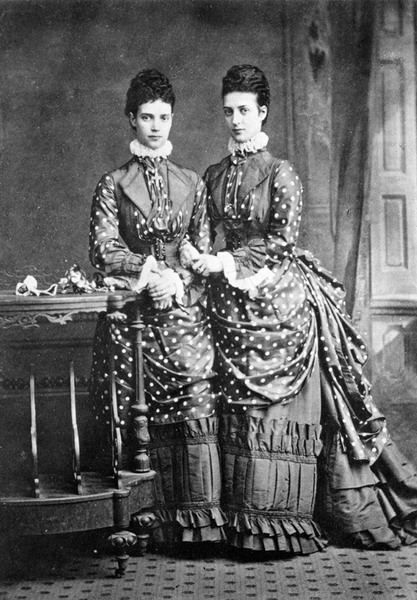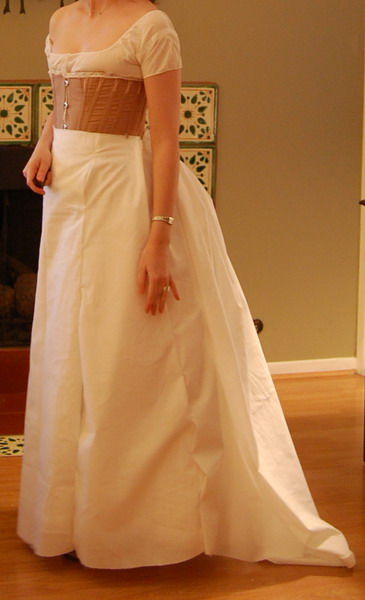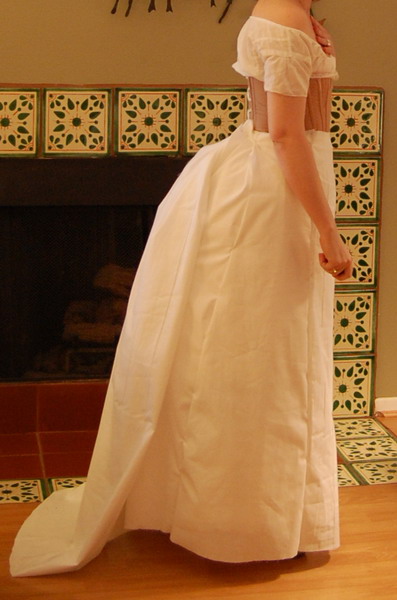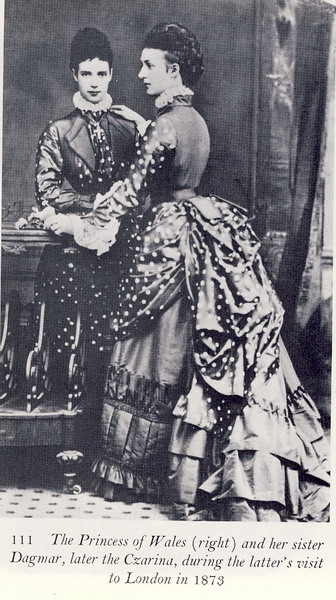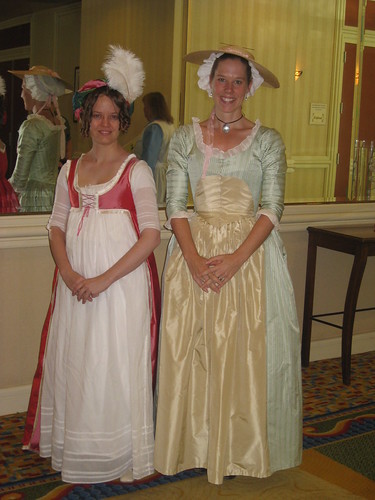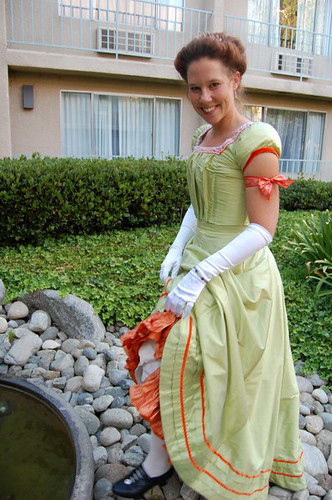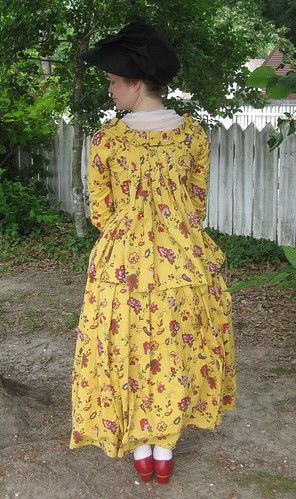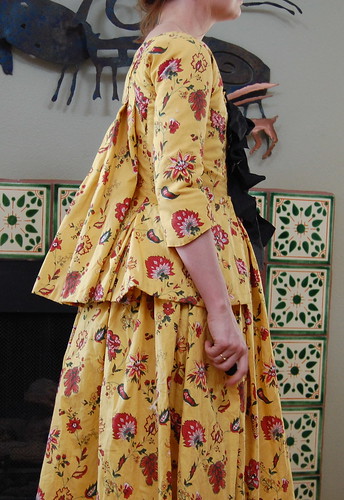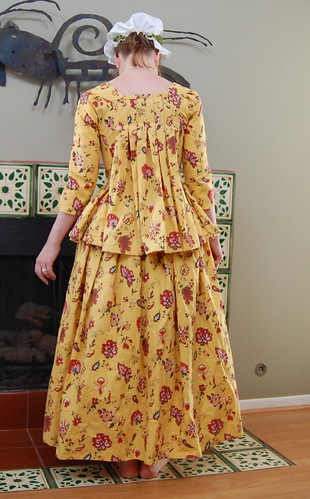I recently completed a new 1920s dress for Costume College. This one is smooth over the hips, unlike the last two 20s dresses I've made, so I needed new underthings.
In addition, I made a dressing gown out of a wonderful pink and green nouveau-ish chiffon that I bought years back to made a 1920s kimono.
All patterns are from Women's Wear of the 1920's. I used silk crepe that I bought in the garment district in LA last year (I love Fabrics and Fabrics!) for another project, but the pink was too dark for that. I trimmed the bandeau and tap pants with lace I bought on eBay ages ago.
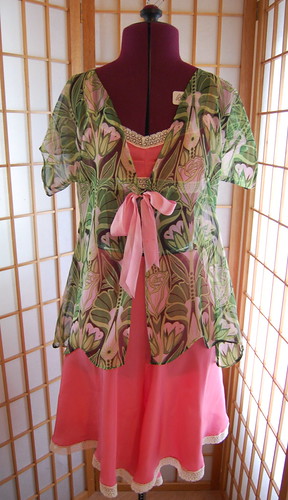
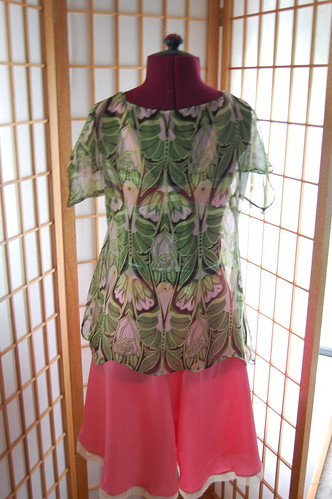
The pattern(c. 1920) is actually the same thing as an 18th century shortgown--one piece folded over and open in front. For patterning purposes though, I used my suffragette dress pattern. Using the above mentioned book as a guide, of course! The suffragette dress has the same fold over kimono sleeve thing happening, but the fit of it was closer than my shortgown patterns. Plus, I found that pattern first. Always helpful :)
I was going to trim it with pink chiffon ruffles and tie it with a green satin tie, but I liked the lightness of it so much that I decided that would be too heavy. Instead, I dyed some white ribbon I had with the remnants of an ancient bottle of Rit rose pink dye.
Everything is sewn by hand as I didn't want to use heavy machine stitches on such light fabric.

And now the bandeau (the 1929 pattern) and tap pants (1930 pattern)!
Again, it's all sewn by hand. The bandeau with back stitches and the tap pants with a combination stitch. I topstitched the darts on the bandeau as well, since the fabric pulled at the seams.
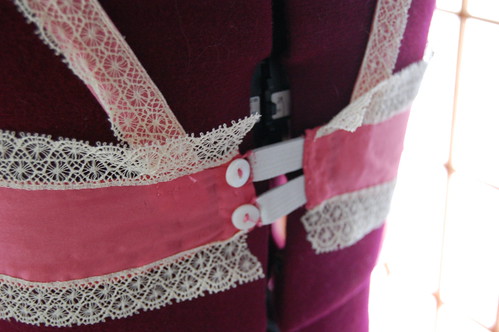
And my favorite part of the bandeau, the back! The original had 1/4" pieces of elastic doubled with loops for buttons at the ends. My elastic is 1/2", but I wasn't driving across town for a 1/4" difference. Not surprisingly, this gives the bandeau a much better fit than just fabric. I've never had any luck with something not stretchy staying down on me. Most stretchy is still iffy, for that matter :)
I reinforced the back with a bit of cotton ribbon. I also used this for the straps. I dyed it pink using the same ancient Rit dye, then covered the straps with lace so the difference in pinks wouldn't be obvious.
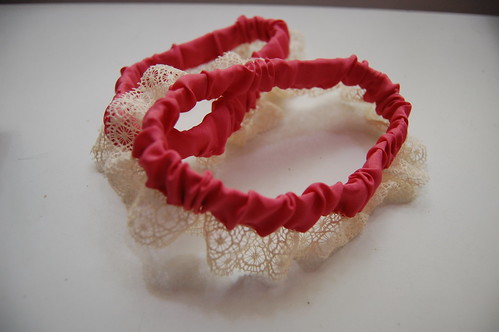
And the garters--just tubes of elastic covered with fabric and a little lace. Easy and cute :)
I will be wearing the dressing gown on Sunday morning at Costume College, so there will be pictures of it on. The fit is very different than on my dressform. I always find it very odd how those work. It's actually set below my measurements and I had to pin up the straps two inches for the bandeau to fit.

